Welcome to all pilgrims who are considering walking the Camino de Santiago! This pilgrimage is a unique experience that combines physical challenges and mental hurdles, intense spiritual connection, and cultural encounters in an unforgettable journey. However, to make it a safe and rewarding adventure, it’s essential to consider some recommendations for care and health for pilgrims like you.
Should I prepare before walking the Camino? What should I know to prevent possible injuries? How to take care of my feet and avoid blisters? Tips for nourishment? In this article, we answer these and other questions that are likely swirling in your head before embarking on this adventure. With our care and health tips on the Camino, you will enjoy an unforgettable and safe experience.
Preparation before the Journey
Before walking the Camino de Santiago, you need to prepare physically to tackle stages of around 20 or 25 kilometers on average per day. As we always recommend regarding physical preparation before walking the Camino, walk regularly about 5 kilometers, gradually increasing the distance. If you can do it on different types of terrain, such as asphalt, dirt, or rocks, even better. Warm-up and stretch before, during, and after. The same goes, proportionally, if you plan to cycle the Camino.
Injury Prevention
If you follow through with the previous advice, you are on the right path to prevent injuries because your body will already be accustomed to walking. Pre-training is the secret to avoiding injuries on the Camino. The most common injuries when walking the Camino are related to the feet and lower joints, and they require careful attention. Remember that they are your most valuable assets, as they have to support you both on any Jacobean route and in your daily life, don’t you think?
Warm-up and Stretching
Just as you did during your previous training, start each day with a good warm-up and stretching. This helps prevent muscle and joint injuries, keeping you in shape throughout the Camino. Also, warm up and stretch during the stage when you take a break, and repeat the process at the end.
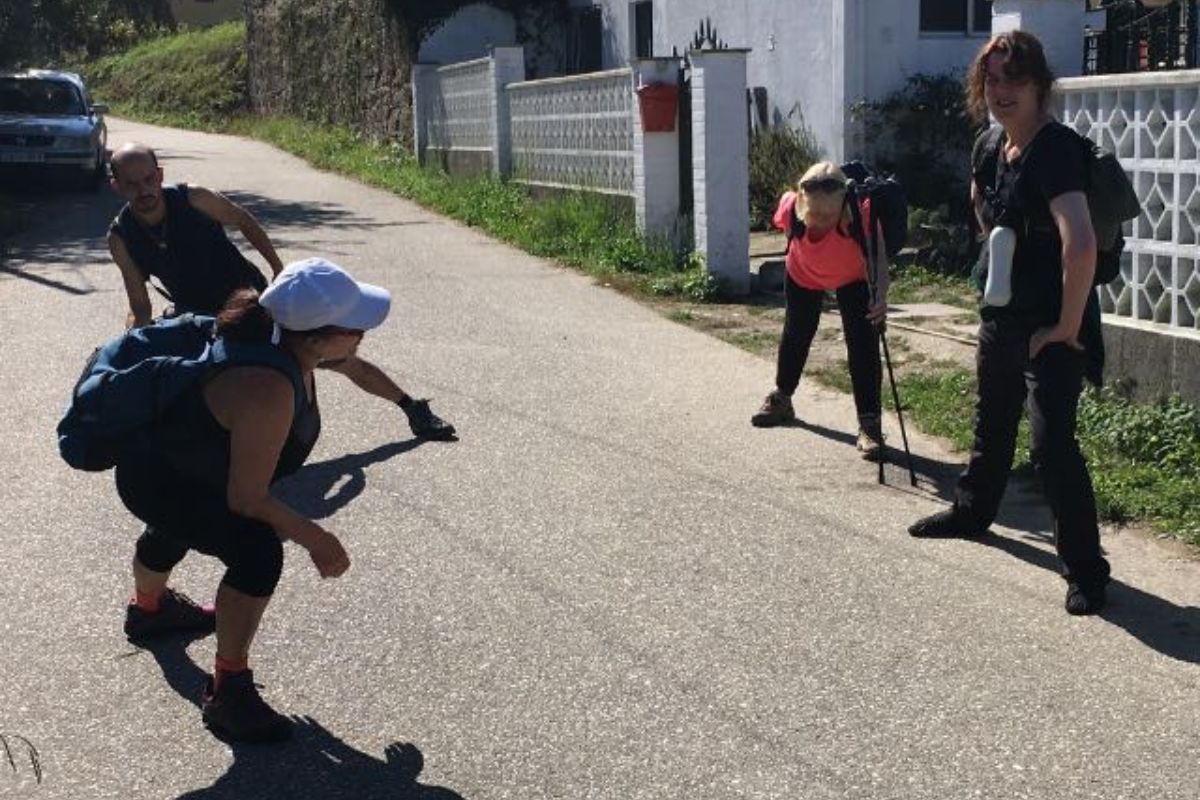
Pilgrims stretching on the Portuguese Way.
Foot and Lower Limb Care and Health
The trending topic on the Camino: foot care and preventing those dreaded blisters. To avoid these problems, apply vaseline before each stage and wear anti-blister socks. Regarding the lower joints, use knee and ankle braces as they provide warmth and support to your knees and ankles. Additionally, you can carry one or two trekking poles, which are very useful for descents or wet terrain.
Nutrition and Hydration
Proper nutrition and hydration are crucial to maintain energy levels during the Camino de Santiago. Before starting the stage, it is essential, just like in your daily life, to have a good breakfast. During the stage, bring nutritious snacks, energy bars, nuts, fresh fruits like bananas, and a canteen or plastic bottle with water. Drink water as if there were no tomorrow, even before feeling thirsty: when you sweat, your body already needs water. During the stage, you will find sources, shops, bars, and restaurants to replenish your water supply.
Regarding food, you can either eat what you have with you or stop at a bar or restaurant for a hot meal. Your body will need an additional amount of nutrients during the journey, so it is recommended to include proteins, carbohydrates, iron, calcium, and healthy fats in your meals. There is a wide and varied gastronomy along the Camino, as well as the famous Pilgrim’s Menu. Take the opportunity to savor the typical dishes of the places you pass through. Moreover, all routes end in Galicia, where you can eat a lot, well, and inexpensively.
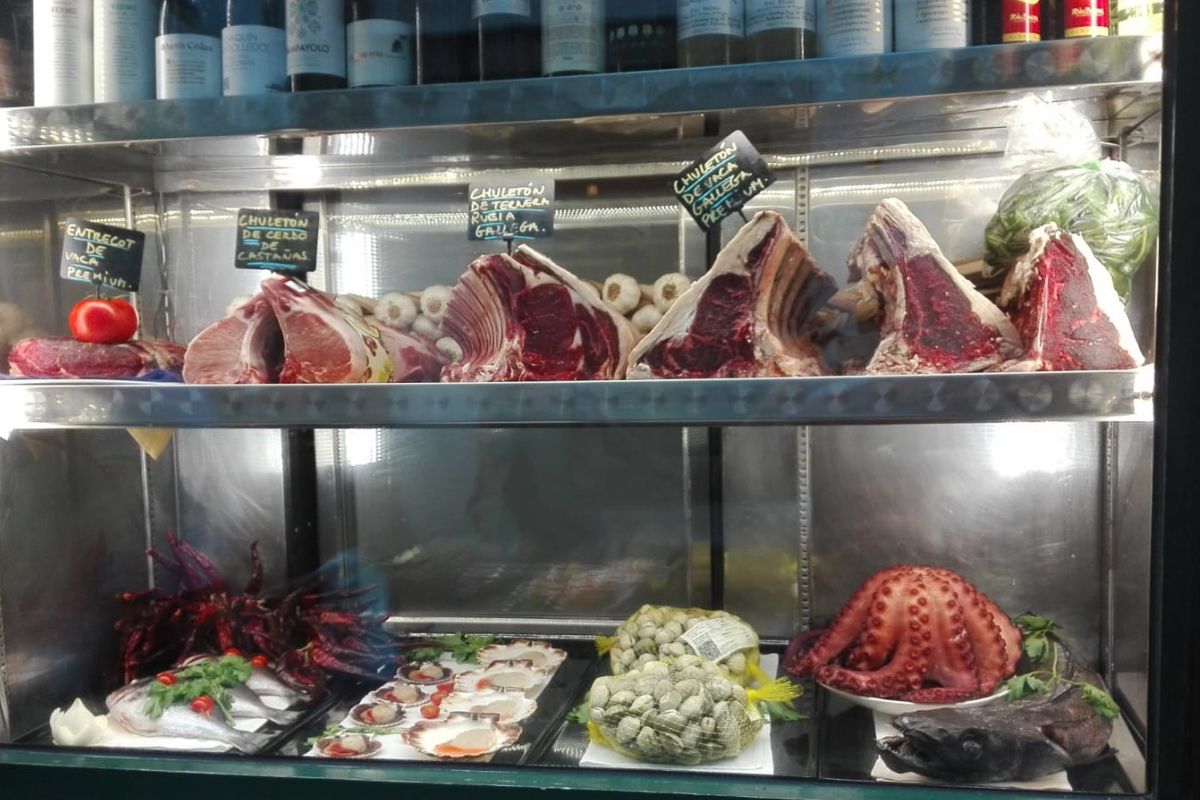
Take advantage of savoring the best of Galician cuisine.
Rest and Recovery
Rest and try to sleep well every night so that your body can recover from the daily effort. Proper rest is one of the essential aspects of maintaining good health during the Camino. Consider the level of comfort you can enjoy based on whether you choose to stay in a hostel or accommodations with private rooms.
Resting doesn’t only involve sleeping at night; it’s also important to stop, take a break, and recover during the stage. Take advantage of these moments of rest to relax your muscles and avoid injuries from overexertion. Meanwhile, contemplate the beauty of the landscapes, meditate, or simply enjoy peace and tranquility. This is mental rest, also very necessary on the pilgrimage. Every moment of rest serves to recharge your energy and feel how the magic of the Camino renews itself, just like your strength, at each stop.
Listen to your body and don’t hesitate to ask for help
If you feel fatigue during the stage, take a break. If you experience pain or discomfort, don’t ignore it; seek help if necessary. All Camino routes have services and trained personnel to assist pilgrims in case of need or emergency. Listen to your body and don’t push yourself to the limit. If you’re on a long journey, you might need to take a full day off from walking. Santiago de Compostela, its Cathedral, and the Apostle have been waiting for you for centuries.
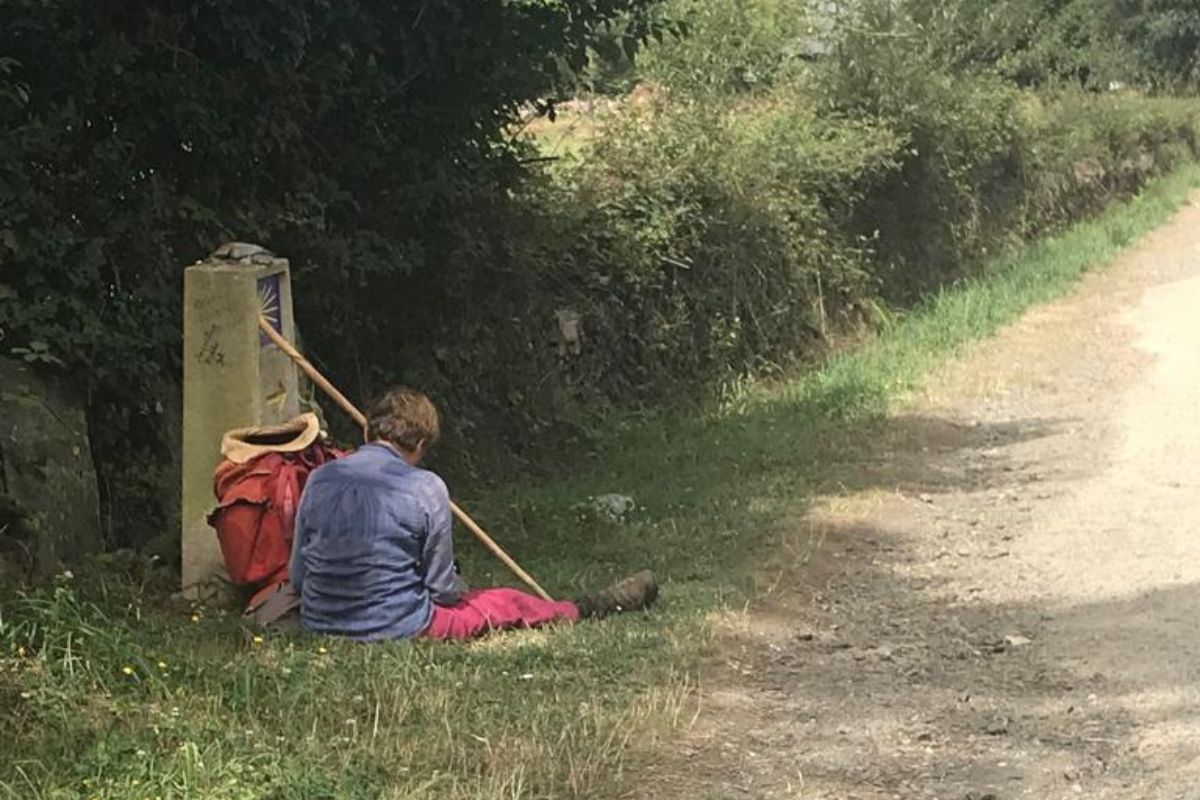
Pilgrim resting on the French Way.
Living with other pilgrims and respecting the environment
The Camino de Santiago is an experience shared with other pilgrims from different cultures and nationalities. Practice empathy and respect towards fellow pilgrims, as everyone is seeking a meaningful experience. Enjoy the camaraderie and take the opportunity to learn from different perspectives, sharing laughter and wisdom around shared tables. This is part of taking care of your mental health, an essential pillar of personal well-being.
Furthermore, you must be a guardian of the surrounding nature. Be aware of the environmental impact you may cause during the pilgrimage and adopt responsible practices for sustainability. Take care of and respect the natural environment by keeping it clean: dispose of waste properly or carry it with you until you find a place to dispose of it. Remember that every step you take should be in harmony with nature and in gratitude for the wonders that surround you.
Choosing the Route
Choosing one route or another is important, as well as the duration of the journey and the time of year when you will do it. The Camino de Santiago offers a wide range of routes and thousands of kilometers, and you can choose to walk any of them in full or in sections. Also, consider how much time you have available, and if you don’t have much, there are week-long routes that, although short, are intense.
Proper Equipment
Depending on the route and the time of year when you walk the Camino de Santiago, you will need to carry more or fewer things. In our article on what to bring on the Camino de Santiago, we provide details of the proper equipment to enjoy it to the fullest. In summary, as basic classics: clothing and footwear, hygiene items, a first aid kit, a sleeping bag if you are staying in hostels, and a waterproof backpack. Of course, bring documentation, money, a mobile phone with a charger, and the pilgrim’s credential. If you need many things, you may need a luggage transportation service; your back will thank you.
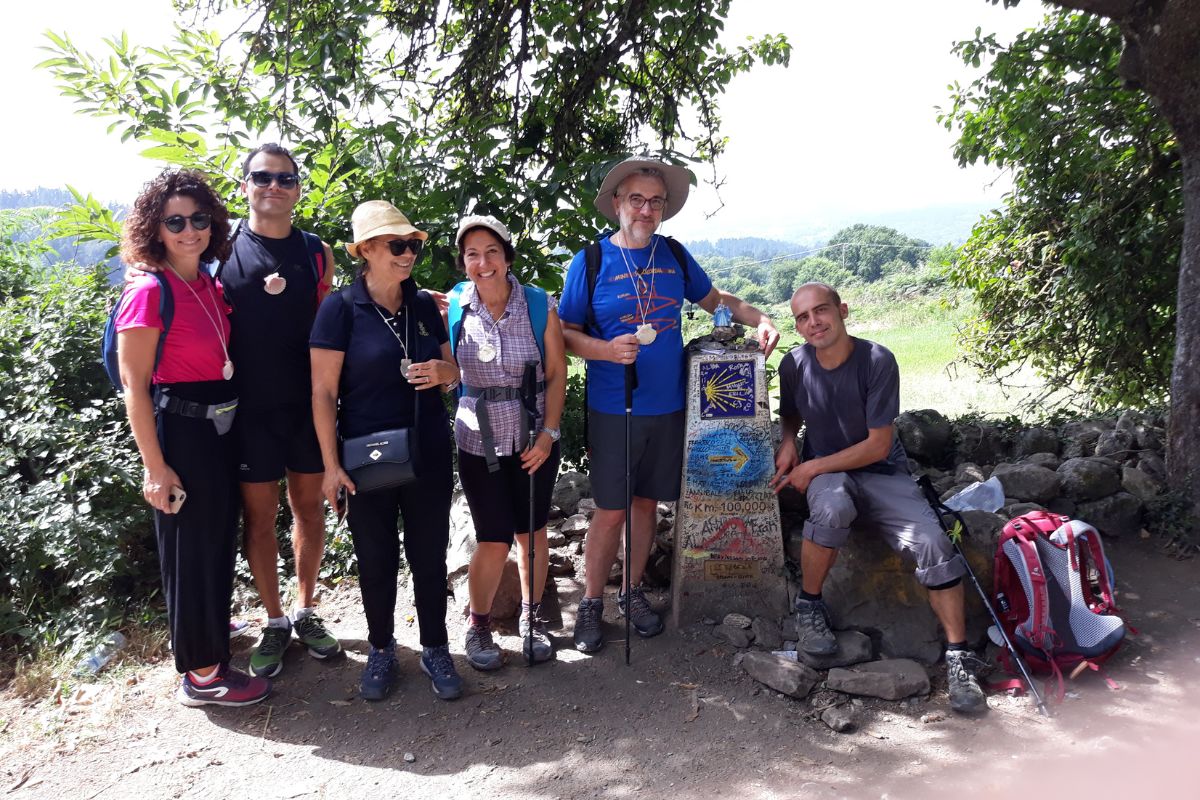
Pilgrims prepared to walk the French Way from Sarria.
A Journey of Care and Health with Enormous Rewards
Taking care of your physical and mental health is, in itself, one of the motivations for taking a Jacobean route. By following these recommendations, your journey on the Camino de Santiago will not only be safer and more comfortable but also more rewarding. By following these care and health tips on the Camino, we assure you that you will be adequately prepared. Remember, this is an experience of self-care and personal growth. Share your experiences and these tips and recommendations with other pilgrims, and all that’s left to say is, Buen Camino!

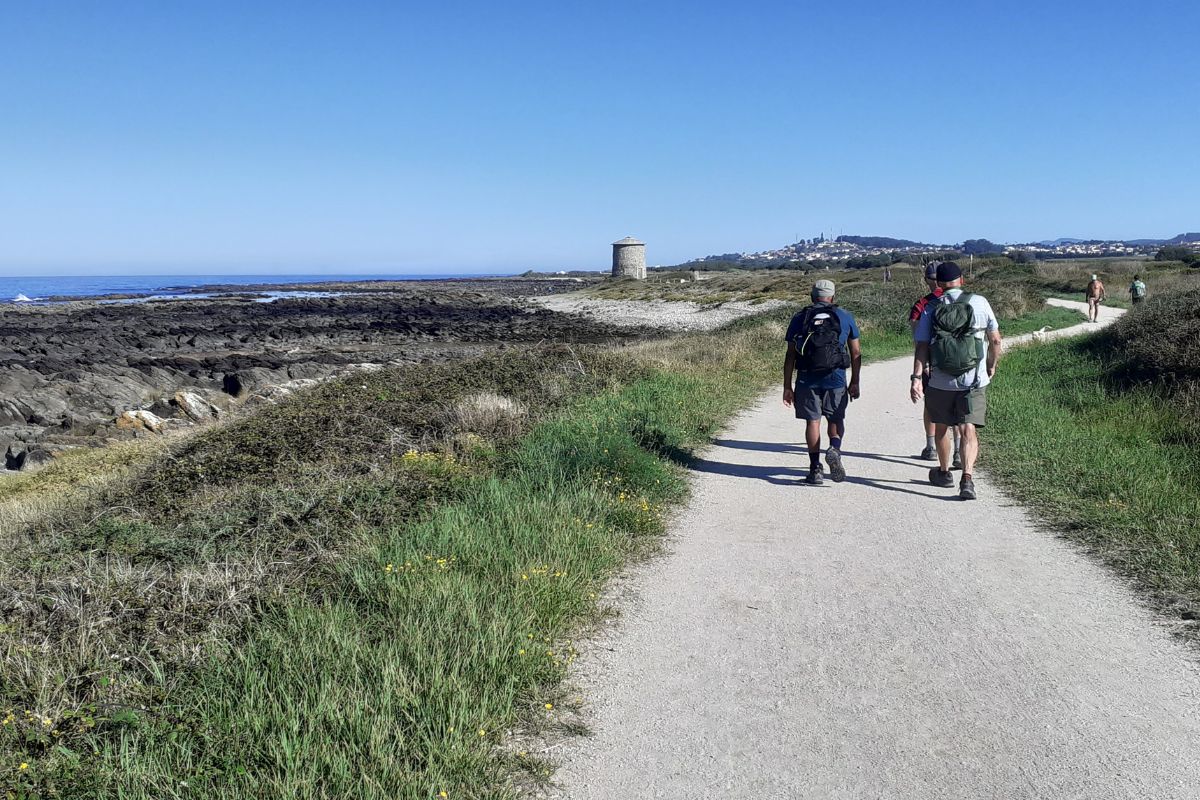


Leave A Comment